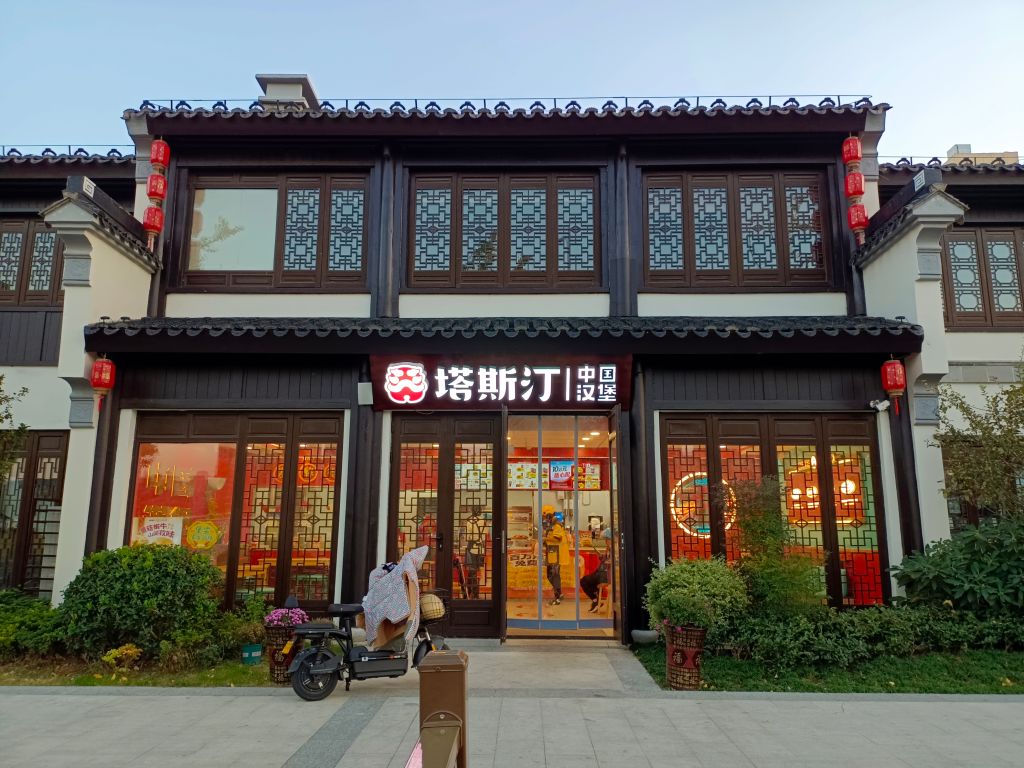
When I stumbled upon a poster featuring a “Chinese Burger” with a Gen-Z idol dressed in a qipao dress and striking a kung fu pose in Shanghai, I couldn't help but scoff at it. “I've seen this before,” I thought to myself, recalling similar marketing ploys that never seemed to last.
But I would be proven wrong. While there have been countless attempts at adding a Chinese twist on Western goods, none had the appetizing consumer market that local fast food chain Tastien enjoys today. In many ways, it is a small signifier of a larger revolution of Xinzhongshi, or “New Chinese Style,” that has now infiltrated mainland Chinese consumers’ lives.
Costing 30-40% less than the typical KFC fried chicken burger in China, the 12-year-old Tastien replaces burger bread doughs with bread pockets, and its limited-time offers stuffing options of traditional Chinese dishes like Yuxiang shredded pork and Mapo tofu. Chinese consumers, especially those in lower-tier cities, are lapping it up. Tastien last year added a whopping 3,500 stores to reach 6,700, edging closer toward McDonald’s 5,900 and KFC’s 12,000, which added around 900 and 1,200 stores, respectively.
The new Chinese style powering this growth is focused on the culture, presentation, and branding of products that channel traditional Chinese culture. It can be bubble tea in a cup made of bamboo, a modified qipao dress with features better suited for mobility, or even the style of one’s home decor.
Why are people so excited about the new Chinese style? The answer lies in the modern Chinese history of shedding traditional customs and, more recently, the evolution of the guochao trend.
One element of Mao Zedong’s Cultural Revolution, which ran from 1966 to 1976, was the demand that the country shed its Four Olds: “Old Ideas, Old Culture, Old Customs, and Old Habits.” Even Chinese New Year customs including setting off firecrackers, and dragon and lion dances, were canceled during that time. That development, along with market reforms starting in 1979 that nudged China toward capitalism, shaped modern mainland China as a receptacle for Western ideas and culture. KFC would go on to open its first store in China in 1987; McDonald’s in 1990.
Some of my happiest memories growing up in the 1990s were relishing in Western fast food chains like KFC. The greasy fried chicken with mayo and thinly sliced lettuce slapped in between white burger buns was seen as an exotic reward when we earned good grades at school. I still remember the anticipation of waiting at the window to see my mom riding a bike carrying KFC.
Read More: A Very Brief History of Chinese Food in America
But in the wake of China’s soaring economy, which created the world’s largest middle class, President Xi Jinping has been advocating for “cultural confidence” since he took office in 2012. The word guochao, which means “China chic” or “national hip,” was coined later in the decade and reflected the growing cultural pride mixed with rising nationalism among consumers.
That pride was noticed by policymakers, who pushed out supporting guidelines and incentives for more brands and e-commerce platforms to follow suit, including the 2017 decision to mark May 10 as China Brand Day every year. Guochao is now used to describe any made-in-China goods, or any products that contain Chinese symbols, techniques, or technologies.
Tastien has capitalized on Guochao but so have other fast food chains like Mr. Rice and Home Original Chicken that serve small stir fry dishes that are closer to China’s traditional foods, as well as beef noodles and Rougamo, a meat sandwich originating from Xi’an.
Even KFC started introducing a new Chinese style brand, Grandpa’s Homely Tea, in my home province Jiangsu, with a logo featuring a cartoon version of the famous Colonel Sanders in a Chinese-style long gown. Its menu and price points look no different than any other new Chinese style tea shops, and it currently has over 20 stores and counting.
If Western fast food brands were the tastemakers in the early days of China’s economic rise, they are now giving away to homegrown upstarts. I’ll always have a soft spot for the KFC greasy fried chicken burger of my youth. But for a new generation of Chinese, they may one day look at milk tea or brands like Tastien with a similar feeling of nostalgia.
More Must-Reads From TIME
- The 100 Most Influential People of 2024
- Coco Gauff Is Playing for Herself Now
- Scenes From Pro-Palestinian Encampments Across U.S. Universities
- 6 Compliments That Land Every Time
- If You're Dating Right Now , You're Brave: Column
- The AI That Could Heal a Divided Internet
- Fallout Is a Brilliant Model for the Future of Video Game Adaptations
- Want Weekly Recs on What to Watch, Read, and More? Sign Up for Worth Your Time
Contact us at letters@time.com